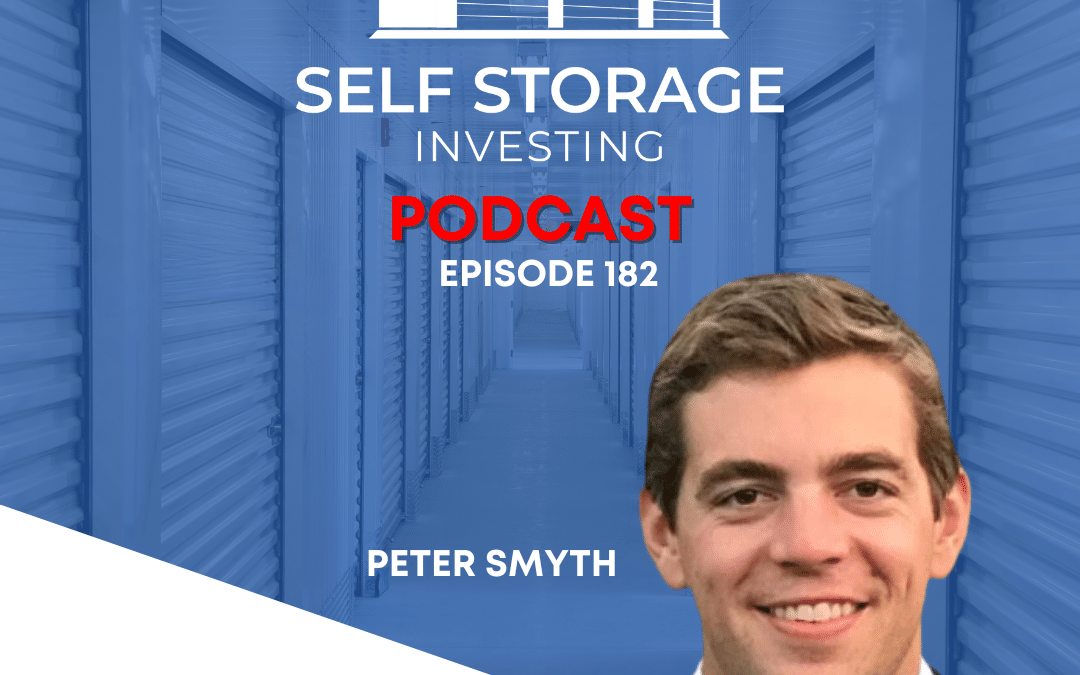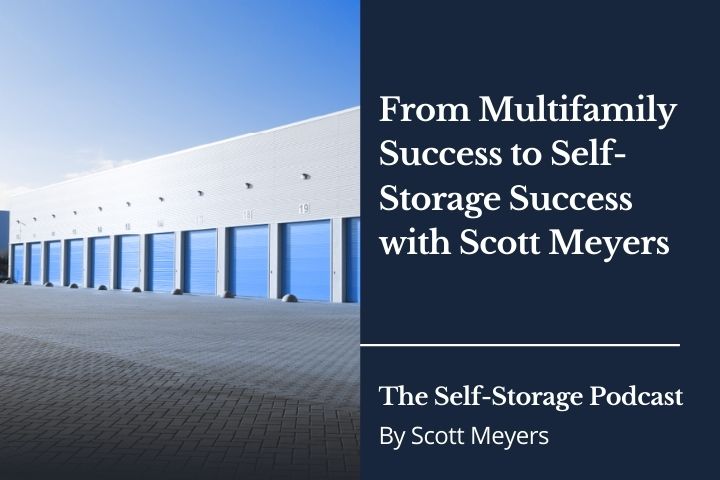Ever wondered how to turn a sleepy self-storage facility into a bustling profit powerhouse?
Unlock the hidden potential of self-storage with the expert insights from Peter Smyth on the Self-Storage Podcast. Scott and Peter explore the nuances of tailoring management strategies to individual needs, enhancing customer experience, and sustaining growth in a challenging economic landscape.
Peter discusses the competitive edge and strategic advantages of white-label storage management, emphasizing how to transform overlooked or mismanaged facilities into profitable ventures.
Through real-world case studies, he illustrates the importance of leveraging technology, effective revenue management, and customized services to optimize operations.
WHAT TO LISTEN FOR
00:58 – Creating a White Label Self-Storage Brand
10:48 – Revenue Management and Cost Reduction Strategies
15:17 – Logical Pricing Parameters
19:15 – Balancing Quality and Cost Reduction
Leave a positive rating for this podcast with one click
GUEST: PETER SMYTH
Peter’s LinkedIn | White Label Storage LinkedIn | X | Facebook |
CONNECT WITH US
Website | You Tube | Facebook | X | LinkedIn | Instagram
Episode Transcript
Peter Smyth (00:00):
Most of the longtime owners of small self-storage facilities like your competition is not other management. It’s the fact that they’ve become accustomed to running something that way for years. And if they haven’t looked before, they probably don’t have that dire of a need that they’re trying to solve.
Announcer (00:23):
This is the Self- Storage Podcast where we share the knowledge and skills from the industry’s leading investors, developers, and operators to help you launch and grow your South storage business. Your host, Scott Meyers, over the past 18 years has acquired, developed, converted and syndicated nearly 5 million square feet of south storage nationwide with the help of his incredible team@selfstorageinvesting.com, who has helped thousands of people achieve greatness in Self- storage.
Scott Meyers (00:58):
Hello everyone, and welcome back to the Self-Storage Podcast. I’m your host of Scott Meyers, and on today’s session and episode we have Peter Smyth with a white label of self-storage. And we’re going to be talking about what it looks like to be able to create a brand by somebody else who is monitored by somebody else in order to take your business to the next level, but then bring that in as your own. And so I don’t want to steal too much of Peter’s thunder. With that, Peter, welcome to the show.
Peter Smyth (01:23):
Thanks, Scott. Happy to be here.
Scott Meyers (01:25):
So I’ve been doing a little deeper dive into what you’re offering here under white level storage and the local locker brand. And I’m so thankful that we had the opportunity to be able to sit down and now talk about this a little bit more because we got a whole lot of folks within our community and also in storage land at large that I know wants to hear a little bit more about what you’re doing if they haven’t already. So with that, give us a little bit of background in the genesis of your company.
Peter Smyth (01:48):
Yeah, that’s very generous to assume that people want to hear about our story, but happy to oblig. So we started out in self storage with Local Locker. So myself and my co-founder Alex Hartman, we were classmates at Harvard Business School and we had this idea where we wanted to bring storage closer to where people live and work. We liked the self-storage asset class, but we were really kind of approaching this from more of a startup mindset, like how can we build a service that is different than what is provided in the industry historically. So naturally we focused on New York City and we thought there’s enough dead space around the city. We were always confident on the demand side. People who live in cities live in small apartments. We both experienced those use cases, but really we’re trying to figure out is there supply? Is there a way to bring storage closer to where people live?
(02:45):
And that idea originated from the concept of just in-building storage units that apartment buildings have. I worked in real estate development and real estate private equity, both of my jobs before Harvard Business School. And in both cases we either built or bought built apartment buildings that had these cages in the basement that were in many cases getting higher rents per foot than the apartments themselves. And that was because people didn’t have enough space. So we graduated from school, started looking for space once we were confident that the supply was there, opened our first location in the East Village in January of 2019, and with very little marketing or operational experience, we were able to fill the thing up and to us that was a testament to the demand. And so we just started scaling that platform. Now these facilities are, they’re all anywhere from a thousand to 5,000 square feet.
(03:47):
They’re small, they’re not as big as a typical self-storage facility. And because of that, there’s one, not a lot of volume there, not a lot of people are going in and out every day. You probably get a few more power users than a typical self-storage facility because it’s a local product. And two, the revenue is not great enough to support onsite staff. So we had to build what we call sort of a decentralized operating model. Essentially if you visualize it, we were like, we’re taking a self-storage facility and breaking it up to serve people across a wider footprint. But those folks are coming from a small radius. And after scaling this to about, I think we were right around 30 facilities as of 20 22, 1 of our investors came to us and said, I’ve got an office building where I converted a piece of it to self-storage.
(04:42):
And managing self-storage is not the same as office property management. We’re dealing with consumers, people, people forget their credit card, they lose their credit cards and they expire. They’re buying storage units like they’re buying furniture. They just have questions. And my property manager is not suited to track down payments and answer questions, do you guys think you can manage this for us? And that is when it dawned on us that what we’d really done over the last couple of years was sort of built a core competency of managing remote self-storage facilities. And we’d sort of done it from first principles. So we didn’t think we were building a self-storage, a true self storage platform when we started out. But then over the years we’ve been forced to do things a little differently and we think a little better, but in many cases just we learned how to do it and we had a scalable playbook so that we onboarded this one facility that I mentioned. And then that’s when we decided to start white label storage and take sort of a third party management to non-institutional self-storage owners. So that’s what brings us to we are today.
Scott Meyers (06:00):
So we could have approached this and I think some people may be looking out there to say, okay, if I have some space like the gentleman in the office building or what we had seen in my market here in Indianapolis many years ago, I think like anybody who’s looking for a facility, they can’t find one. We’re looking for extra space that we can develop and convert to storage. And yeah, the basements of apartments was one of ’em. Or just spare buildings outbuildings on top of other industrial buildings or different asset classes seem to fit the bill when we couldn’t find anything else. So would you say that that is an approach that you would take in terms of an investor looking to work with you, or is it just the opposite once they have something like that, then they look to you to be able to manage that? Or is it both?
Peter Smyth (06:48):
You’re sort of talking about local locker in that sense and there we tend to source supply. It’s usually a retrofit of an asset. It’s somebody who, our pitch to them is we can generate revenue. This is a good market for it. And you have the space now that we have a brand under local locker, we have through word of mouth and existing relationships, we will get plugged in on the front end of projects or sort of looked at as sort of a tenant and tow, even though sometimes it’s a management agreement, sometimes it’s dedicated building storage so that on the local locker front tends to be just retrofit. But we do a bit of biz dev on both sides. And then on white label, you probably look at it the same way. I mean if you look at our mix of clients on the white label side, we have probably a higher percentage of new build clients than a typical manager might.
(07:49):
Because one, a lot of the new build that’s happening is it’s first time owners of drive-up facilities who there’s just not a lot of management options out there. And what tends to happen is these folks, they read about self-storage. It seems like it’s a passive income asset, but while the revenue and the customer the way they pay and the nature of the industry is passive, the management of the asset is not. Property management is an operating business. And so we find people right at the point of, oh man, I need, this is a several million asset, I want to get institutional management in here. So it looks kind of similar in that you’ll get somebody, you may get an existing owner, you’ve solved a pain point for them and that you’ve reduced costs because they’ve got want to reduce their labor on or have a better website or professional customer service. But then when they go to approach a new asset, they bring us as a manager partner with them.
Scott Meyers (08:58):
So who would you say is your ideal client then? Is it that person who’s running a brand new facility? Is it the troubled person who we’re seeing a lot right now where there’s a whole lot of folks that are challenged either in a lease up or an existing established facility that they’re looking to just reduce expenses facing a refinance or some other challenges in the marketplace right now, but where do you think, what is that niche or the area in which you feel that you’re bringing the greatest benefit to owners?
Peter Smyth (09:25):
For an existing owner, we’re usually solving a specific need either if you’ve got, and I say that because most of the longtime owners of small self-storage facilities like your competition is not other management. It’s the fact that they’ve become accustomed to running something that way for years. And if they haven’t looked before, they probably don’t have that dire of a need that they’re trying to solve. So we are usually getting somebody that is either a new owner or purchasing an asset and they’ve either discovered that the situation is worse than they thought or they just know that they need management so they’re looking for it. Or a new bill where that’s another reason where you’re capturing somebody when they an active searcher. We still do get longtime storage owners because now we have credibility, we have kind of a larger client base, and in those cases we can pretty quickly be justify our use case through best in best in class sort of revenue management, rolling out tenant protection or tenant insurance when it’s maybe not there, or having a better customer service team. And then you have somebody realize, okay, wow, this is both a cost reduction and a revenue optimizing process here. But for the most part it’s like our management contracts mirror how one might view storage demand. There are these moments in time, whether it’s moves or yeah, our version of that is a purchase of an asset. That’s where we tend to do well.
Scott Meyers (11:05):
This is and has been a challenge for folks that are growing and scaling in the business, whether they buy their first facility, typically they’re managing it themselves, like you said, until they recognize the fact that this is an operating business and they may be over their skis and perhaps hiring the server or their hairdresser to manage their multimillion dollar asset because she was nice or he provided a good service was not the best thing to do for their investment, and now they have to move somebody in. But then when you begin to look around, you recognize that in your market, if you’re one facility in a market in which your competitors have three or four and they’ve got that economies of scale and they’ve got more marketing dollars to feed into their ecosystem, it makes more sense to not only bring in a management company, but also one that has multiple locations similar to the REITs or our competition so that we can also play on that same, so that we can also level the playing field a bit in terms of getting in that economies of scale. So how have you taken that approach and have you been strategic in how you compete against the REITs when you go up against them in certain markets in which you’re operating in?
Peter Smyth (12:19):
Yeah, in some cases we don’t compete. Many cases we find that some of the assets are so small or in markets where REITs aren’t focused. So I will say it’s not always that we are competing against them, but yeah, I mean we have scale and we sort of pass it along to customers in different ways than REITs do. We’re not using our brand, that’s why we’re called white label storage. So the customers are going to keep their brand. That’s one differentiator. But when we have approached everything from that same local locker first principles strategy, let’s just start with a website. We didn’t like being beholden to the lead times and the structure, the off the shelf structure of existing industry websites. And so we built our own website, and once you built a website, there’s an upfront cost associated with that. But once you’ve built money on the software and we have our own internal development team, it’s pretty minimis to keep a website up and running.
(13:26):
And so when we onboard a client, we charge ’em a management fee, but we don’t charge them for a website. And we think that website is as good if not better than others. Similarly for pricing, we’ve spent money, a lot of our own labor was spent, we scraping pricing with using just human labor. It’s just doing surveys the same way as some would historically. So we built our own pricing tool that scrapes and we didn’t want to, it’s not very scalable for either our own product or for our clients to go and pay for the the shelf pricing tool that’s out there. We’re either incurring that cost out of our fee and it’s a gross profit problem for us, or we’re passing it along to the customer and it’s a cost problem for them. So why not spend the one-time cost, build the product the way we want it and then pass it along to the client.
(14:23):
We’ve done that with every single, and we spend a lot of time thinking about what are the activities that we spend the most time on, where are our costs because we are our managers of our own stores. And so then we try to think through either technology or just thinking through the team differently, is there a way to build this where one you can reduce costs while either maintaining quality or doing it better, and then two, passing that along to the customer. Ultimately we do being able to charge a fee that is reasonable. And so we try to convey that to customers by not building profit centers into sort of these hidden things like let’s just pass the cost savings along to them and maintain a margin that makes sense while running a good operation.
Scott Meyers (15:17):
Well, and that’s one of the things I like about your offering because it is a little different. It meets a niche or it serves a specific place in a specific need for these clients that are just starting out. Because if you are growing and scaling, or even if your first facility is a large one and it is a REIT type property, it’s a class a facility, a hundred thousand square foot in a major metropolitan statistical area, you may want to REIT to managing it. But the challenges with that is that you are beholden to using then their platform and their websites as I just mentioned. And so then if you decide to move away or change management companies, well you’ve lost that market presence and you have to start all over again getting the good Google juice and visibility all over again. So being able to have your own site is certainly one of those. But what other types of customization are you able to afford to your clients that maybe they can’t get when they go to other places with a management company that has their own set parameters and set rules that you have to play by in order to operate in their ecosystem?
Peter Smyth (16:20):
Yeah, yeah, I think so it starts with the name, but that is our key differentiator is that we are way more collaborative on everything that happens at the facility than most of the other, I think any of the other operators out there. We basically, we will run the playbook the way that we think it should be run, but then we will present what we would do from a strategy standpoint to our owner on a weekly and monthly basis and let them decide. So look, marketing is the best example. Most property managers will give you set up an operating account and give you a marketing budget, and that’s what you’re going to spend. And in some cases there’s profit built into it, maybe there’s not. But either way, what is considered maybe best practice in the eyes of the management company might not align with the goals of the owner.
(17:18):
I mean, somebody might not want to spend money upfront and is okay with a slower lease up. And so they’re just, instead of spending $1,200 a month on Google ads, they want to spend $600 a month. We’ll still manage those ads. Either way, we charge our fee for what we do, but then we make a recommendation and say, look, we think that you can be effective and then that you should be spending $1,200 a month, but if you want to spend 600, that’s fine. We’ll do it. It doesn’t change the way we do things. I mean, either way our marketing team’s going to go in and they’re going to tweak the ads, they’re going to make improvements, and whether the daily budget is 15 or $30, we’re doing the same work regardless. So that’s a good example. I would say the same thing sort of exists with pricing.
(18:08):
Not everybody wants to push prices on customers the same way. Some folks see the REIT strategies that are out there and they want to go, they want to do an entry rate and then push three months and push six months because they went to a conference and some folks want to lock rates for a year. We will make the recommendation that we think fits the property, but if they don’t want to do it, we will not absolutely not force them to do that. And it’s an open book. So that I think is the biggest differentiator for us. And I think one, it helps us just build a good relationship because it’s more of a back and forth and we’re more of an advisor for the client, but two, it just fits for people better. And it’s not a blank check. I think you can have a pretty hard time looking at line items. The p and l of a self storage facility is not that complex. There’s not that much in there. But if you lose control over the biggest things or you don’t have visibility into those things, you can end up in a situation where you’re just not happy.
Scott Meyers (19:15):
Sure, sure. Well, and you bring up a good point. Sometimes owners, and we consult with these folks as well, we are teaching ’em how to get into the business and then we do continual coaching, mentoring, consulting, as well as the folks that are in our mastermind. We’re all sharing best business practices and seeing what’s out there in the marketplace. And to your point, my talk that I had at the ISS show in April this year was about the five biggest threats to our industry in the coming years. And one of them was unwanted attention from the practices of offering introductory rates, very, very low rates, and then ratcheting those rates up a very aggressively. And there are news gathering channels, news stations and other folks that are putting their eyeballs on our industry. We’re starting to get a black eye as a result of it.
(20:06):
And my caution is for anybody that’ll hear that is in the industry is to stop to not do that any longer because that last thing we want is to have rent control like they have in multifamily and or some other stipulations that are put on us. And so I think anytime that we can come alongside of some folks and just say, Hey, that may sound like a good idea, but here’s what this means in terms of dollars and cents. And also there may be some other challenges that you may face from an operation standpoint from not utilizing these practices even if you think it’s going to work. So that is the benefit of working with a company like yourself or hopefully any of the good management companies out there have that experience behind them that can institute those businesses practices to keep people from just stepping in it.
Peter Smyth (20:54):
If you just do the one thing in isolation, you could be in a bad spot. And then not to mention again, they have the brand, so you get a couple bad reviews from customers in a low volume industry. Reviews are big for SEO, we spend a ton of time on that. And if you’re in a remote strategy where you can’t ask people onsite on a daily basis to write reviews, you just get in this negative cycle. So there are a lot of reasons to consider that. I mean, again, it’s not to say don’t push rates, but you just need to be thinking holistically about how does the entire playbook come together? And that’s why we just working with clients to explain here’s why we would do this this way.
Scott Meyers (21:42):
Well, let’s talk a little bit about some of those strategies, but more in the sense of the technology behind it. So effective revenue management has been a huge topic for the past couple of years. How do we keep up, how do we act like the airlines and the price lines of the world and keep an eye on our competition and how do we get skate to where the puck is going as Wayne Gris he says, and know where people are searching and to get in front of them. Talk a little bit about, and you can speak to this in terms of how you beat the competition or how you compete with your folks to win eyeballs in the searches, but what technology are you employing right now for effective revenue management to get in front of folks when they are searching and maybe other ways to reduce payroll so that you can compete a little bit more for your clients?
Peter Smyth (22:27):
Okay, yeah. So well, there’s cost reduction and the revenue management side. So I’ll just start with the tip of the spear, which is the website. We spent a bunch of money and a bunch of time building a website that we like, and it’s fast, it’s customizable, so you can put good branding up there. And by the way, these are things that matter. And then our marketing team does the research to put headers and copy on the site that Google and the search engines might care about. We talked about reviews. Reviews are a marketing and revenue management tactic, but then there’s the rate itself, and we talked about that for a second. So it used to be tough or more difficult to scrape pricing from competitors because you’d have to really ping their site with software to retrieve what the actual rates are.
(23:30):
With chat GPT and some of the other technology, it’s available now you can truly screen grab rates in real time and pull that, internalize that in a way that you can pull down without these competitors throwing up blockers. You just got to find ways to reduce costs. So that’s one of the things we do is we’ve found a way to pull rates quickly. And on top of that, we just think there are always logical parameters. That’s where experience and management comes in. I don’t think if you let the algorithm run the pricing, and again, if you’re doing it against maybe a REIT or a large regional player, you could get into a race to the bottom. And so we don’t get into the business of moving rates hourly. I think it’s really hard to understand what the true rate is in the market if you don’t hold your rate for a little bit and see what the volume is.
(24:33):
And I also think that you can instigate a price war, which we’ve done that in some cases, and I think it’s just not, I think getting more active than you need to is something that we would advise against. So it’s combination of what can we do to reduce the amount of time we spend understanding what the rates are, which is that’s the investment in technology, plus what are the logical parameters based on how we run our model with our clients? And that ends up with, that’s our street rate strategy, which is a revenue management practice. Similarly, if you want to talk about ECR, I just spent a lot of time talking about this with a client. We can’t because we can’t compete with or we don’t want to compete and maybe can’t compete with the REITs about when it comes to constant ECRI, we tend to want to do it more infrequently but greater.
(25:35):
And then we use concessions a little differently. We are always trying to incentivize less churn, so maybe throw a discount in later for a customer that’s been there for a longer period of time, and you’ll be able to tease out who are the short-term customers and who’s there, and maybe self-select the long-term customers because marketing is an ongoing expense and I don’t think people are, I think a stabilized facility still does need some marketing to keep it full, but if you can try to get customers in that are there longer term, you’re not going to be on SpareFoot and Google ads as much. So our strategies are usually looking at a facility, looking at the competitor. If there are REITs in the market, we will focus on trying to do things a little differently. So we capture tenants that are focused on focus on different things.
(26:35):
And then on the cost reduction side, I mean it’s kind of a different ballgame and I’m not even sure that technology is always a factor, but a big part of our playbook is we’re not adamant about being fully remote, but I do think that a thoughtful staffing strategy is important at a self-storage facility that might only be generating $15,000 a month top line. If you have a W2 worker that’s making $5,000 a month with full burden and benefit, that’s too much of your NOI for somebody that is maybe sweeping a unit or two, putting an overlock on per day, these things could be consolidated. And so our philosophy there is it’s both best practice but also a cost reduction exercise. The people who are sweeping units are qualified to sweep units or they are right for that job and they’re not right for customer service.
(27:37):
The folks that are right for customer service should be fully focused on customer service and conversion. That’s an extension, it’s a sales job. And the folks that are focused on pricing should be focused on pricing. I think a lot of the legacy facilities will have the same person do all of those things. And not only is that person probably right for one thing and not all of those things, even if that person were right for all three of those things, there’s a cognitive burden that is associated with having to do those different things at one time. And there’s an expense. You can’t do all of ’em at once anyway, so if you’re going and sweeping units, you’re not going to answer the phones. So we spent a lot of time thinking about that. A 200 unit facility and a 250 unit facility should be having one person there. If you had a 250 person company, the management team for that would be different than a 200 person company. So that’s a big part of our strategy.
Scott Meyers (28:39):
Well, I think what we’re seeing, and it’s probably the right time to do so, anytime that the economy gets tougher or the competitive landscape or the business environment gets tougher for an industry or your particular business, that’s when you begin to start to revisit everything. Looking at your procedures, looking at the cost and asking the question again, Hey, why are we doing this? And I think this is one of those areas and what I’ve seen come out of this Peter, is that now we’re looking at underwriting a facility before we hit into it with much more scrutiny in terms of the income that is currently in place and what we can add to this facility. And equally, if not more, the expense side, looking at their expenses right now and not taking anything for granted. I mean we’ve always done that, however, to a more granular level now as to how are we going to achieve what needs to be done to be able to handle this expense and who’s going to handle it in what ways?
(29:34):
And so that’s why again, this niche that you’re filling is in between some of the other management options out there versus managing it yourself or self-managing, which we just don’t feel that that is a good route to take for the reasons that you just mentioned. So if you would, Peter, let’s talk about one of your typical, maybe an average or an ideal client that came to you that was facing some of these challenges that we’re just talking about and they’re wondering which way to go and what services to implement third party versus handling their own. What is the solution that you provided for them and then what success did they see on the back end of that after utilizing your services and working with your company?
Peter Smyth (30:14):
Yep, yep. So in many cases, a lot of assets are trading right now where there was some legacy owner with either no software, that’s the worst case scenario. Or maybe best case it is an opportunity or a legacy software that’s not great with a model that is built around boots on ground and cash or check payment. That is the most challenging transition and that is where I think we can add the most value for a new owner. There are a lot of, I’d say there are three or four sort of I see customer profiles that we’re focused on. One of them is new build client looking for management for the first time.
(31:07):
There’s the most frequent customer that we’re seeing is somebody taking over a facility that is not dilapidated but just overlooked for a while and not managed actively. And then there’s legacy owners who have some management practice and we sort of taking work off their hands, maybe preparing them for a sale. Those are three that come to mind, but I want to just talk about the case study of the facility that didn’t have maybe up-to-date software. In that case, we have found that the books that the buyer has been provided are maybe not accurate anyway. It’s hard unless you really get into the bank accounts and reconcile ’em. Most of the folks who pay onsite are not paying, they’re not showing up on the first of the month, which is really challenging, especially if you have bills and to pay and debt and utilities. So what we do is we facilitate that transition.
(32:09):
We will get them from either offline to online from payment at any point in the month to payment via credit card or a CH on the first of the month. And it’s painful and you’re going to rattle a cage and you’re going to lose some customers along the way, but you probably, there’s maybe a chance that the underwriting was wrong or the assumed in place, NOI was wrong. We’re going to get the good revenue to stay and we will make, we are not an anti cash anti check payment. We set up a mailbox, a remote mailbox or a physical mailbox depending on what the onsite situation is. But we try to get everybody online and incentivize them to do so. And when you do that, your economic occupancy in those cases is just way higher because you’re capturing rent on timing of cashflow matters, but quality of revenue matters as well.
(33:08):
And that is also the case for consumer business. But then on top of that, there are tend to be at those facilities, those are the ones that aren’t selling insurance or tenant protection. And if they are, they don’t have a good capture rate. So that’s typically a rural facility where your average in place rent is somewhere between a hundred and $150 a month and that the eight to $9 that you could get from selling insurance or tenant protection is a meaningful percentage. And a big piece of that is it’s almost like a hotel your RevPAR is, it’s your rate times, your capture rate or your occupancy. It’s the same thing with tenant protection. We were really focused on getting that number out by being hands-on following up daily and having a transition team in place to get you from point A to point B. So long story short, we have a few facilities where we came in, got the facility from offline to online, got them from either not having tenant protection to having protection or insurance with a high capture rate. You may see, I think the most recent one that I looked at where we built a case study, we ended up increasing, there was a dip from whatever the in place was or communicated in place was, but we got up to, I think it was like 14% higher than in terms of actual collections within three months. And I think that can be fairly common. There are opportunities like that that exist so
Scott Meyers (34:46):
Well, that’s exactly what I was looking for, Peter. And there are so many opportunities out there and we’re still seeing many opportunities with these legacy clients and legacy facilities that are maybe an afterthought or they’re just not employed. Those best business practices in which we can turn up the WIC by just doing that. Just keeping an eye on rates and proper timing and managing things just more effectively as we look to not only the balance of this year and what’s coming. So as we look at the balance of this year in what may be a challenging economy and increasingly so within an election, there seems to be always this pause during an election year and we don’t know what’s going to happen with regards to interest rates. And the banks are waiting as well. Everybody’s doing their best to maximize performance because the better your facilities are performing, the more options you have with regards to either a sale or refinance. So what are you doing, what’s coming down the pike for your company and what are some of the things that you’re looking to implement that’s going to make you more competitive not only for yourself but also for the clients that you serve?
Peter Smyth (35:52):
Yeah, we focus, so we talked about the iteration of, we went from local locker to white label as a full service, third party management for product for these non-institutional assets. We have now started trying to then break out a la carte services. There are often we’re seeing a lot of owners who are good at one thing or want to handle a couple of things. And so we’re taking that sort of customization to the next level where we might do customer service plus delinquency management and revenue management for an asset but not touch stuff on the ground stuff. Or we might just be website only. And so we’re trying to build the tools so that we can go and look at a facility and say, look, we could tailor this to you. We could do these things because we’re doing them. We’re thinking about each of them as their own independent activity. I mean they all dovetail at the end of the day, but we’ve set them up to do so because we’re collaborative with the owner, we can do pieces of it and not all of it. So I think it’s a strategy that if you’re an owner and you want to spend a lot of time focused on a capital project, you might not be as actively managing delinquency or pricing. And that’s where we can step in and help.
(37:17):
That’s one thing that I think will be helpful over the coming months as folks are trying to find ways to weather the storm. And we can do the same thing on the labor front. We can find you a way to staff your property more efficiently and in doing so, we can give you exposure to other sides of our business.
Scott Meyers (37:39):
Well, Peter, it is going to be an interesting year and looking forward to seeing more of what you’re doing. And I think you’re spot on because I think that seems to be the place where some folks either don’t want to give up something or they’re really good at it, or perhaps just the expense of bringing in a full third party or even other companies that have multiple bolt-on services that still doesn’t make sense. And so I think that’s a niche that is going to fill the need for many, many folks. So first of all, what is the best way before we wrap up for today? What is the best way for people to be able to learn a little bit more about what you’re doing and the services that you offer?
Peter Smyth (38:12):
Yeah, so I mean you could just go to our website, which is white label storage.com. We’ve got some case studies there where you can set up a call. You could also reach out to marketing@whitelabelstorage.com. But yeah, we will respond within the day. We are an open book. All our information is out there and love to take a look at your facility and at least be, we have found that this industry is a very collegial industry, which has been a surprise since joining. You go to these shows and competitors tend to share information and we are happy to be at the very least of knowledge resource for folks in the industry. So please do reach out, check out our website and see if there’s an opportunity for us to collaborate.
Scott Meyers (39:03):
Perfect. Well, Peter, you looked at our industry, Harvard educated, looked around the business landscape and decided on self storage. What has continued to keep you involved in storage and passionate about it and excited about this industry?
Peter Smyth (39:17):
Well, now I’m stuck because I have a four-year-old and a three-year-old and nine month old. So we’re sort of pot committed at this point. But I mean, the thing that I always liked about storage, it is an incredibly durable asset class. I mean the revenue, we started a business before the pandemic and we had peers and other businesses that were kind of around our same vintage that just went by the wayside. And whether it’s a recession or a pandemic, there are dips in revenue, but at the end of the day, you do not see facilities sitting at 0% occupancy like you do with other asset classes. And the need is there.
(40:02):
The asset class is still not as institutional as many of the other real estate asset classes. And so I just think there’s a lot of opportunity and we are trying to serve when if you think about storage, if you think about all of the storage assets, we think about it as a pyramid or the bottom of the pyramid. There are the most number of facilities and they’re the smallest. They don’t have the best options. We are trying to be the service provider for those players so they can compete with any of the other storage players out there. And I don’t think that there’s a lot of room for us to get better and for other players to get better. And so I think there’s a lot of runway.
Scott Meyers (40:41):
Yep, yep. I would agree. I’ve been in the industry for 20 years now and for the same reasons, I’m still excited about it. For all those of you mentioned, most Storage Nation that’s been following us for a number of years. I know that my top 10 reasons why I love self storage and you rattled off about three of ’em, is that we still have a huge opportunity in front of us because we aren’t dominated by the REITs in terms of ownership. So lots of trading going on. It’s the big rollup race to see who can gather as many as possible and either buy somebody else out or sell to somebody else either way. And then the fact that, yeah, we do very, very well during recessionary periods. We do very, very well during inflationary periods. People are storing for different reasons in both those economic environments.
(41:23):
And it has afforded us a whole lot coming from the other asset classes being habitation from multifamily and single family rentals and having over 450 units before we pulled the plug, that has allowed us to not have to handle the hassles that come with habitation real estate and so that we could, my wife and I could raise our kids and spend time with our kids. And so you are in a sweet spot, Peter. And for folks that take a look at this as not being a very attractive asset class, these metal boxes on concrete slabs have done pretty well by us and many other folks that are in the industry. And as you mentioned, it is to a degree somewhat like a fraternity for folks that have been in for a while because we can share a lot of our best business practices with our friendly competitors because it’s rare that we run into our competitors, at least at our level. They’re going to take anything away from us and we can share 90% and still keep 10% or even 5% of our secret sauce to ourselves because it doesn’t really make any difference if we share the rest with somebody else. It’s either not a secret or it doesn’t affect us if we give it away and help someone else. So that’s the mantra that we’ve had anyways.
Peter Smyth (42:26):
Yeah, I think that’s right. And I would add, I think you mentioned the rollups. I mean, there are a lot of people rolling up storage assets. There’s a lot of capital for that, and there’s a lot of folks trying to build vertical SaaS. I mean, we like where we are because not a lot of people are trying to scale a services. It’s a funky spot to be in, and we like to own that. People try to be in one bucket or the other. And I think that just to be a service provider who can serve all, we’re trying to wedge ourselves in there and be a one-stop shop. So I think we’re open to, I’m sure we’ll be doing many different things in the future, but for now, we are purely a services player in an industry that we love.
Scott Meyers (43:11):
Well, Peter, so good having you here on the show and you are speaking with a storage nation, and this is a service that fills a niche for so many of our folks that are, as you know, we teach people how to get into the business. This is the place where people come to learn about self storage more than anybody else. And so to be able to have you on here to explain just another tool, another resource for them when they are struggling and or really need at least some other options in terms of managing their storage facilities, it’s been great to have you on to be able to share your successes and what you’ve built here. So I appreciate your time.
Peter Smyth (43:42):
Thanks, Scott. This has been great.
Scott Meyers (43:44):
All right, my pleasure, Peter. Take care everyone.
Announcer (43:50):
Hey gang. Wait three things before you leave. First, don’t forget to follow the Self Storage Podcast and turn on your notification so you never miss another episode. And while you’re there, please leave us a five star review if you like the show. Second, be sure to share your favorite episodes and more via Instagram, and don’t forget to tag us. And lastly, head to the links in the show description and hit follow on Twitter and Facebook to get a front row seat as we grow and scale our business and bring you along with us.
















